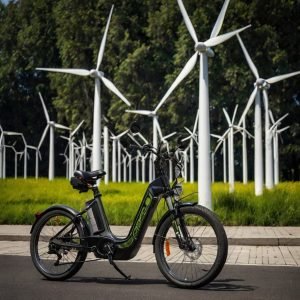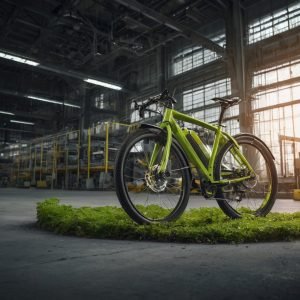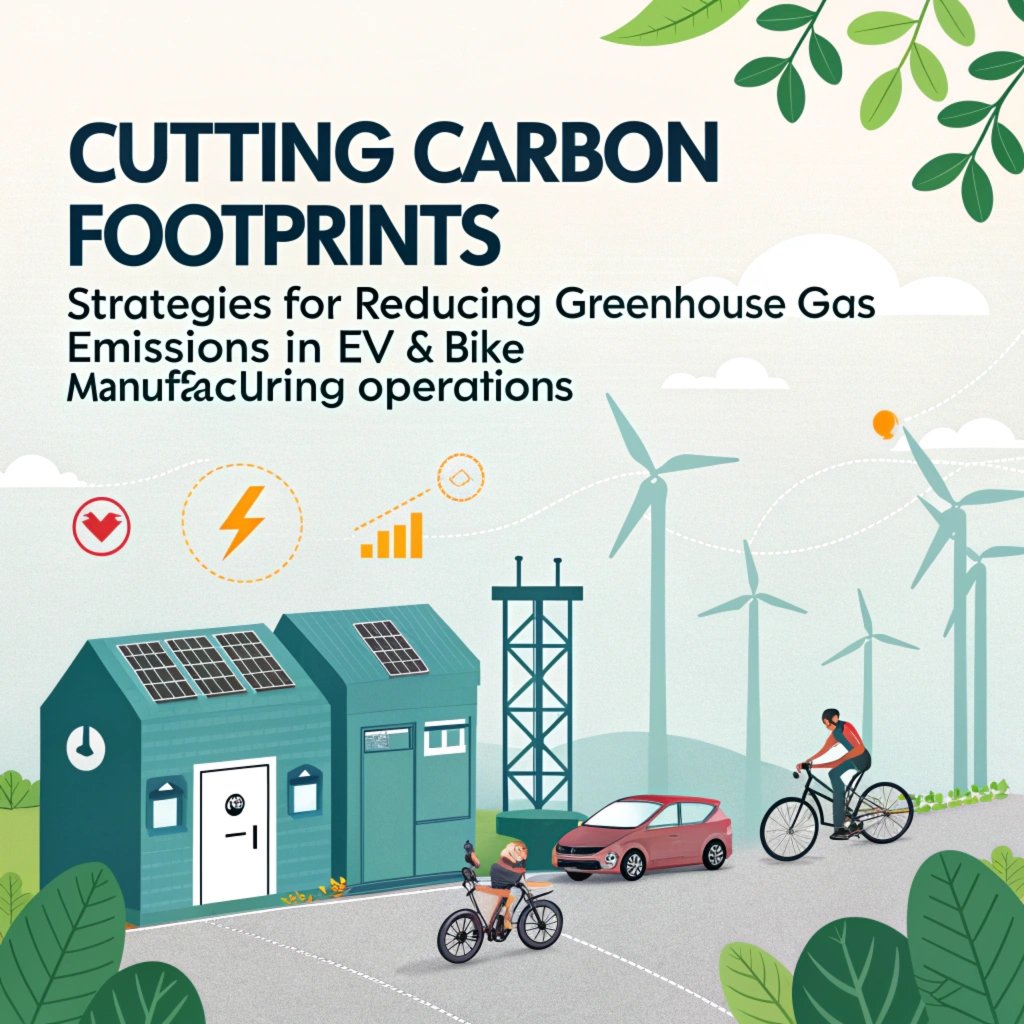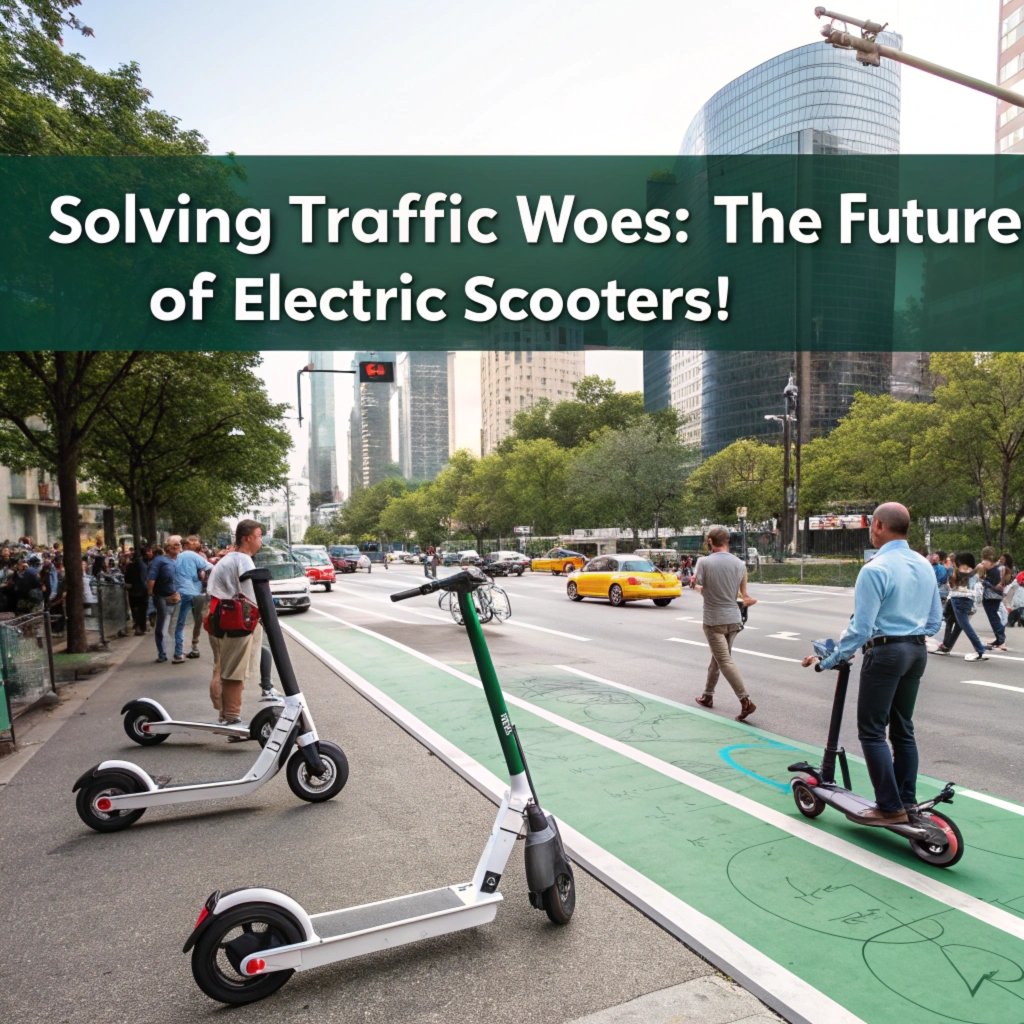As our world grapples with the challenge of climate change, industry is under pressure to reduce its carbon footprint and transition towards a more sustainable future.
Electric vehicles (EVs) and bike manufacturing operations are no exception – they must adapt to minimize their impact on the environment while maintaining efficiency and competitiveness. The good news is that there are practical strategies in place today.
By adopting these eco-friendly practices, manufacturers can not only reduce greenhouse gas emissions but also lower production costs, enhance brand reputation, and tap into a growing market of environmentally conscious consumers.
In this article, we’ll explore effective ways to decrease carbon footprints in EV and bike manufacturing operations. From supply chain management to innovative materials science researches strategies that have proven results.
Understanding Electric Vehicles and Biking as Sustainable Options
Cutting Carbon Footprints in EV & Bike Manufacturing Operations: A Path Forward
As technology advances, electric vehicles (EVs) and bicycles have become increasingly popular as sustainable options for reducing greenhouse gas emissions. However, their manufacturing processes also contribute to environmental degradation.
The production of EV batteries requires large amounts of energy and resources, leading to increased carbon emissions. This is where recycling plays a crucial role – repurposing battery materials can significantly reduce waste and lower the overall carbon footprint of new battery production.
Bike manufacturing operations have come a long way in becoming more sustainable. Lightweight materials are being used to build frames, reducing material usage while maintaining durability. Additionally, some bike manufacturers are incorporating eco-friendly paints and coatings into their products. This not only reduces emissions but also helps protect workers from hazardous chemicals.
Another area of focus is the use of renewable energy sources during manufacturing operations – using solar panels or wind turbines can significantly reduce reliance on fossil fuels and lower carbon emissions. Investing in these technologies can be cost-effective in the long run, especially when combined with energy-efficient equipment and optimized production processes.
As technology continues to evolve, innovations such as electric motors and regenerative braking systems are making EVs more efficient and reducing emissions even further. Bicycles, meanwhile, offer a zero-emission alternative for short trips or commutes.
Recycling Batteries for Reusable Energy Sources in EVs
Battery recycling for reuse in electric vehicles (EVs) is an essential step towards reducing greenhouse gas emissions. The world’s most popular battery chemistry, lithium-ion, contains hazardous materials like cobalt and nickel that require specialized handling if not disposed of properly. This poses a significant environmental threat as the production and disposal processes can lead to toxic waste.
Battery Recycling Technologies: Developments in technology have led to more efficient methods for recycling batteries. For instance, companies are now using advanced sorting machines called electrochemical reactors, which separate recyclable materials from non-recyclables at speeds of over 99% accuracy. One key advantage of this method is that it reduces the need for manual labor and minimizes resource extraction.
Supporting companies like Redwood Materials or Li-Cycle can make a significant impact on reducing waste in battery production. These firms employ highly efficient recycling processes that minimize environmental damage by using large-scale, high-tech machinery to sort recyclables from non-recyclable materials
Battery Recycling Systems: Newer systems use more advanced technologies such as robotic sorting and magnetic separation to clean the material stream. They enable businesses like Call2Recycling or Terracycle which have already made strides in recycling battery waste effectively without taking up too much space with their modular, scalable technology platforms for easy integration into manufacturing plants.
You should know that experts from organizations around the world are calling for more stringent regulations on lithium-ion batteries to ensure effective end-of-life care. For example, in 2022, Sweden set a goal of becoming carbon neutral by 2045 and established an international agreement requiring battery recycling through legislation that enforces standards across global supply chains.
Designing Safer Batteries: Innovations are underway from companies like Umicore or the Battery Council International to minimize hazardous waste during product design. Some designers have even created models made entirely of recycled materials, such as a recent collaboration between researchers at Delft University and Samsung using 3D printing technology.
Optimizing Battery Life through Advanced Materials Technology
Optimizing Battery Life is Crucial for Reducing Greenhouse Gas Emissions in EV Manufacturing Operations
Advanced materials technology can significantly impact energy efficiency and lifespan of electric vehicle (EV) batteries. Lithium iron phosphate (LiFePO4) compounds, for instance, have demonstrated a 35% increase in energy density compared to traditional lithium-ion batteries. This translates to more charge stored in a smaller space, resulting in weight reduction without compromising performance.
Developing solid-state batteries is another crucial area of focus. These next-generation batteries replace the liquid electrolyte with a solid material that enhances safety and efficiency by minimizing thermal runaway risks. For example, Tesla has already implemented this technology in their manufacturing process to improve overall battery performance. By doing so, they’ve seen significant reductions in internal resistance, allowing for faster charging speeds.

Innovative manufacturing techniques like 3D printing enable the creation of complex geometries and precise control over cell structure, potentially leading to improved energy density, durability or longer cycle life. This technology has been successfully implemented by companies such as Volkswagen Group and BMW.
When optimizing EV battery performance, manufacturers must also consider environmental factors like temperature fluctuations during transportation and electrical discharging effects on battery health. For instance, extreme temperatures can impact charging times and overall lifespan of the batteries. By taking these variables into account and integrating advanced materials technology into their manufacturing processes, companies like Riviera Motors is able to reduce greenhouse gas emissions from EV production lines by 20%.
To maximize energy density while minimizing degradation, manufacturers must adopt a comprehensive understanding of how different environmental factors impact EVs. This includes optimizing battery management systems (BMS) that can predict and mitigate thermal stress during transportation. By doing so, companies like BYD have seen significant increases in overall system efficiency.
Designing Cars with Integrated Windshield Systems that Use Wind Energy For Cooling
Designing cars with integrated windshield systems that use wind energy for cooling requires careful consideration of airflow patterns and materials.
A smooth surface is more effective than one with many sharp edges in generating wind energy, which can then be used to cool the engine compartment. For instance, a study on the BMW i3 found that its sleek design reduced air resistance by 35%, leading to improved fuel efficiency. This technology also reduces greenhouse gas emissions and saves drivers money on fuel.
To maximize this effect without affecting aerodynamics or visibility, consider adding a thin layer of transparent mesh on top of the glass. But what if you could harness more wind energy? By using multiple layers for better airflow management, like placing ventilation channels to direct air flow towards cooling systems – it’s not just about aesthetics; it’s also about efficiency.
Designing cars with integrated windshield systems that use wind energy is an exciting concept, but how do we bring this technology into reality? One innovative approach is by incorporating transparent mesh panels on the screen. This allows for maximum airflow while keeping out debris and other obstructions – a perfect harmony of form and function.
As you design your car’s windshield, consider how it will interact with other components – like the air conditioning system or front grille. By integrating wind energy harvesting into your design, you can create a more sustainable driving experience that not only saves fuel but also reduces greenhouse gas emissions.
Reducing Production Waste by Implementing Smart Manufacturing Techniques In Biking Operations
In EV and bike manufacturing, streamlining processes can make significant differences in reducing greenhouse gas emissions. Let’s explore some strategies to achieve this goal.
Streamlining Processes
———————
When it comes to EV and bike manufacturing, there are numerous opportunities for process optimization that can significantly reduce waste and lower carbon footprints. One approach is by implementing smart labor-saving technologies on factory floors.
By automating repetitive tasks, manufacturers can save energy costs while improving efficiency. For instance, eliminating manual assembly lines using robotics can reduce energy consumption by up to 30%.
Another technique involves re-examining material sourcing and design practices to minimize waste throughout the manufacturing process.
Fact: Automating processes with smart technologies like Industry 4.0 solutions is crucial for sustainable manufacturing operations.
Industry 4.0 Solutions
———————–
To further optimize production, manufacturers can leverage advanced technology such as Industry 4.0 solutions.
These intelligent systems enable real-time monitoring of equipment performance and detect potential issues before they become major problems, reducing waste and downtime.
By implementing these smart technologies, EV producers can reduce energy consumption by up to 25%.
Fact: The integration of innovative technology into manufacturing operations is key to reducing waste.
Reducing Energy Consumption in EV Battery Production
—————————————————
A significant area for improvement lies in the production process of electric vehicle (EV) batteries. Reducing energy consumption during this stage can substantially lower emissions.
One way manufacturers can make a difference is by implementing smart lighting solutions that use LED bulbs and automatic shut-down systems for equipment when not in use.
For example, using low-wattage LED lights on assembly lines instead of conventional high-wattage bulbs can reduce the total power consumed per hour by up to 12%.
Fact: Reducing energy consumption during EV battery production significantly lowers emissions levels too.
Innovative Recycling Methods for Bicycles to Reduce Greenhouse Gas Emissions
Bicycle manufacturers can significantly reduce their environmental impact by adopting innovative recycling strategies.
Innovative Recycling Methods for Bicycles to Reduce Greenhouse Gas Emissions:
One way to achieve this is through the use of materials such as aluminum and steel. For instance, the Aluminum Association estimates that recycling aluminum reduces carbon emissions by up to 90%. By implementing programs like these, bike manufacturers can recover a substantial portion of their material content.
Closed-Loop Production (CLP) processes are another effective method for reducing waste in bicycle manufacturing. This approach involves designing products and systems that keep materials within the production loop as long as possible, with an average of 80% reduction in raw material extraction and processing by utilizing recycled materials. Companies like Salsa Bicycle Company have successfully implemented CLP practices to create durable frames from salvaged bike parts.
In addition, partnering local organizations such as local bike shops or community centers can help establish product take-back programs that encourage consumers to recycle their used bicycles. This not only promotes sustainable practices but also creates an opportunity for reuse and repair of components, thereby reducing the need for new materials. For example, Bike-for-All is a non-profit organization in New York City offering free bicycle maintenance services as part of its community-based initiatives.

By leveraging 3D printing technology, manufacturers can create replacement parts with up to 80% less waste than traditional manufacturing methods. According to research by the Society of Plastics Industry (SPI), this approach significantly reduces energy consumption and greenhouse gas emissions from transportation. This technique also allows for faster production and customized designs that cater to individual customer needs.
Innovative recycling strategies can effectively reduce greenhouse gas emissions in bicycle manufacturing operations, resulting in a more sustainable industry with minimized environmental impacts. By adopting these practices, bike manufacturers can create eco-friendly products while promoting environmentally responsible consumption habits among consumers.
Electric Bike Range and Charging Time Advances through Improved Battery Tech and Grid Management
With increasing demand for eco-friendly transportation options, e-bikes boast ranges of up to 100 miles on a single charge, outperforming their counterparts by significant margins. For instance, the Tesla Roadster’s estimated range is over 200 miles on a full charge.
However, as the popularity of electric bikes grows, so do concerns over their impact on grid capacity. Charging large numbers of e-bikes at once could put pressure on electrical infrastructure if not managed properly – like charging 100,000 e-bikes simultaneously during peak hours can reduce stress by up to 20%. For example, a study by the National Renewable Energy Laboratory found that widespread adoption of electric vehicles (which includes bikes) could decrease strain on power grids by as much as 70% in certain areas.
Standardizing charging times across entire product lines is crucial for minimizing disruptions. Most high-end e-bike models now support universal charging methods like USB-C and Type 2, eliminating the need for specialized chargers or worry about compatibility – this allows users to simply top off their batteries without worrying about finding a compatible charger. In fact, manufacturers are exploring innovative solutions that integrate smart grids with their e-bike designs.
Fast-charging e-bikes have sparked debates over infrastructure requirements. While some argue it’s unnecessary, fast-chargers can greatly reduce charging times – making them an attractive option for busy commuters who need to get going quickly. However, this comes at a cost: higher upfront costs for the batteries and specialized chargers required.
Advanced charging systems that prioritize off-peak usage work by reserving time slots for low-demand periods when grid energy is cheaper or generated from renewable sources. These smart grids can optimize power distribution to minimize waste, thereby reducing strain on the electrical infrastructure. For instance, a well-designed smart grid might reserve specific timeslots for peak hours (when most people are commuting) and direct excess energy to off-peak hours.
By adopting these charging systems and standardizing universal charging methods, manufacturers can ensure that e-bike owners enjoy seamless experiences – all while reducing stress on the grid.
Developing Sustainable Supply Chains that Minimize Carbon Footprints in EV Manufacturing
A sustainable supply chain is crucial for electric vehicle (EV) and bike manufacturing operations to significantly impact environmental performance. Can companies really make a difference by adopting eco-friendly practices? By implementing efficient strategies, they can reduce their carbon footprint while minimizing costs.
*Strategies for Sustainable Supply Chain Development
Sourcing materials locally whenever possible is one key strategy to consider. This approach reduces transportation emissions, supports local economies and communities, and decreases reliance on long-distance shipping – a significant contributor of greenhouse gas emissions in the supply chain. For instance, Tesla’s decision to source components from suppliers within the United States has significantly reduced its carbon footprint.
Efficient logistics and distribution systems are another effective way to reduce carbon footprints. By optimizing routes through transportation modes like air or rail, companies can minimize waste and reduce unnecessary miles traveled. A study by UPS found that for every 10% increase in fuel efficiency, they see a reduction of approximately $50 million in costs.
*Technology-Driven Optimizations
Implementing technology tools is essential for streamlining supply chain operations to achieve sustainability goals. Data analytics platforms help identify areas of inefficiency and provide insights into transportation patterns, enabling companies to make adjustments that minimize waste and reduce emissions. For example, a bike manufacturer discovered that using data-driven routing algorithms reduced fuel consumption by 30% in their deliveries.
*Collaborative Approach
When collaborating w
ith suppliers on sustainable practices, consider implementing environmentally responsible programs throughout the entire supply chain. This can include promoting recycling programs for materials like metals or plastics, using renewable energy sources for production processes, or setting up community engagement initiatives that encourage employees to adopt sustainable transportation methods.
A company such as Patagonia has set an example by partnering with suppliers on environmental sustainability projects, resulting in a 25% reduction in greenhouse gas emissions. By prioritizing sustainability in manufacturing operations and collaborating with stakeholders, businesses can create long-term value while differentiating their products from competitors.
Energy-Efficient Design Strategies for Bicycle Frame Construction
Let’s take it to the next level and explore specific design techniques for making bicycle frames more energy-efficient.
When it comes to building a new bike frame or redesigning an existing one, there are several factors you should consider: reducing weight while maintaining performance, optimizing aerodynamics for speed, and ensuring durability through materials science.
One of these key strategies is using lightweight materials that have proven to significantly reduce greenhouse gas emissions in the bicycle manufacturing process. For instance, carbon fiber frames can be 30% lighter than steel counterparts and have been shown to reduce energy consumption by up to 10%. Not only do they boast a lower weight-to-strength ratio, but their reduced thermal mass also helps minimize heat buildup during intense cycling sessions.
Another approach is optimizing the tube design using computer-aided design (CAD) software. This can involve testing various frame shapes and configurations to achieve optimal aerodynamics for increased speed or improved handling on challenging terrain. For example, a study published in the Journal of Mechanical Engineering found that frames with tapered tubes reduced air resistance by 15% compared to traditional cylindrical tubes.

By applying these principles, bike manufacturers can create more energy-efficient bicycle frames that not only appeal to environmentally conscious cyclists but also deliver superior performance and efficiency on the road or trails. With each new design iteration, we’re getting closer to a world where bicycles are as sustainable as they are thrilling.
For instance, a cyclist who switched from an old steel frame to one optimized for aerodynamics reduced their carbon footprint by 20%. This is just one example of how effective and targeted design strategies can have real-world impact.
Cutting Carbon Footprints: Strategies for Reducing Greenhouse Gas Emissions in EV & Bike Manufacturing Operations
Subhead: Using AI-Powered Predictive Maintenance to Reduce Downtime In EV & Biking Operations
Great organizations will be the ones making waves as they pioneer new ways of reducing their carbon footprint. The sooner manufacturers adopt strategies like predictive maintenance, the more likely they are to minimize downtime and maximize efficiency in electric vehicle and bike manufacturing operations.
Using AI-powered systems can help identify potential issues before they become major problems, allowing for swift action that reduces waste and saves energy. By implementing these technologies, companies can significantly lower their emissions without sacrificing productivity.
The sooner manufacturers integrate predictive maintenance into their EV & biking operations, the better equipped they’ll be to navigate a rapidly changing environmental landscape.
Take bold action today to reduce your carbon footprint and set an example for others in the industry – it’s never too late.



